This summer has been exceptionally cool and wet so no surprise to see so many mushrooms popping up everywhere on our mostly-woodland property in southwestern Ontario. But I’ve never seen so many different kinds. And some of them are truly weird. Take a peek, if you dare.
A reef on a leaf
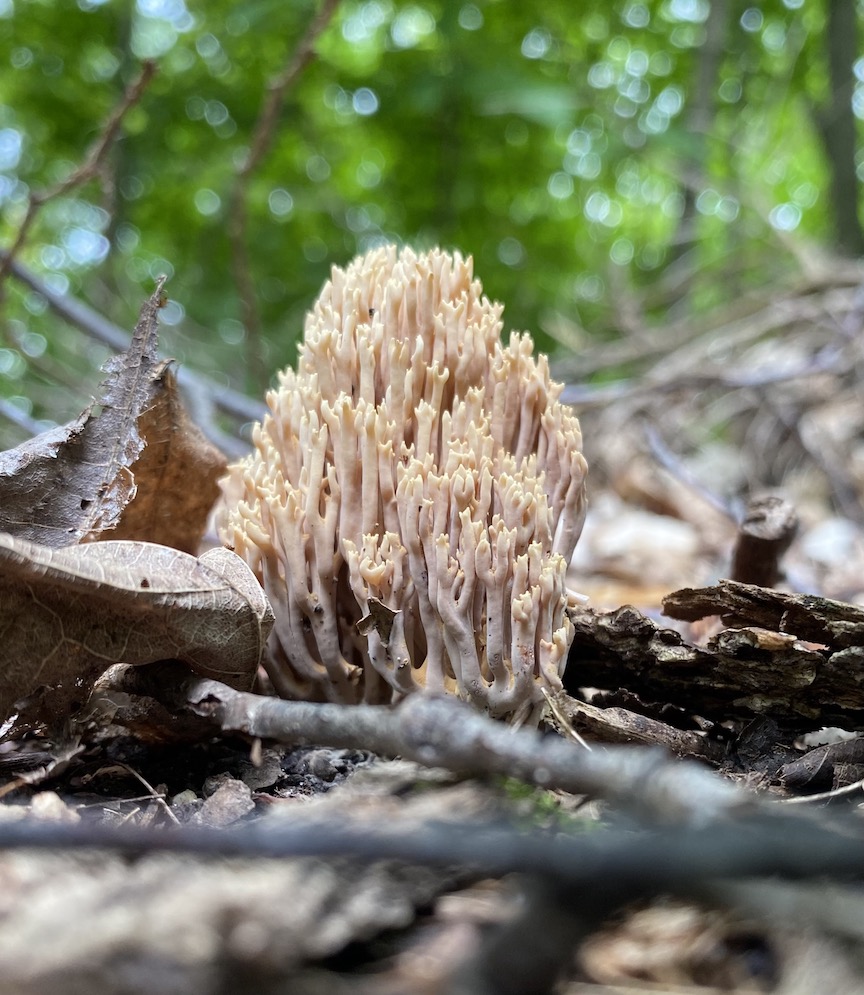
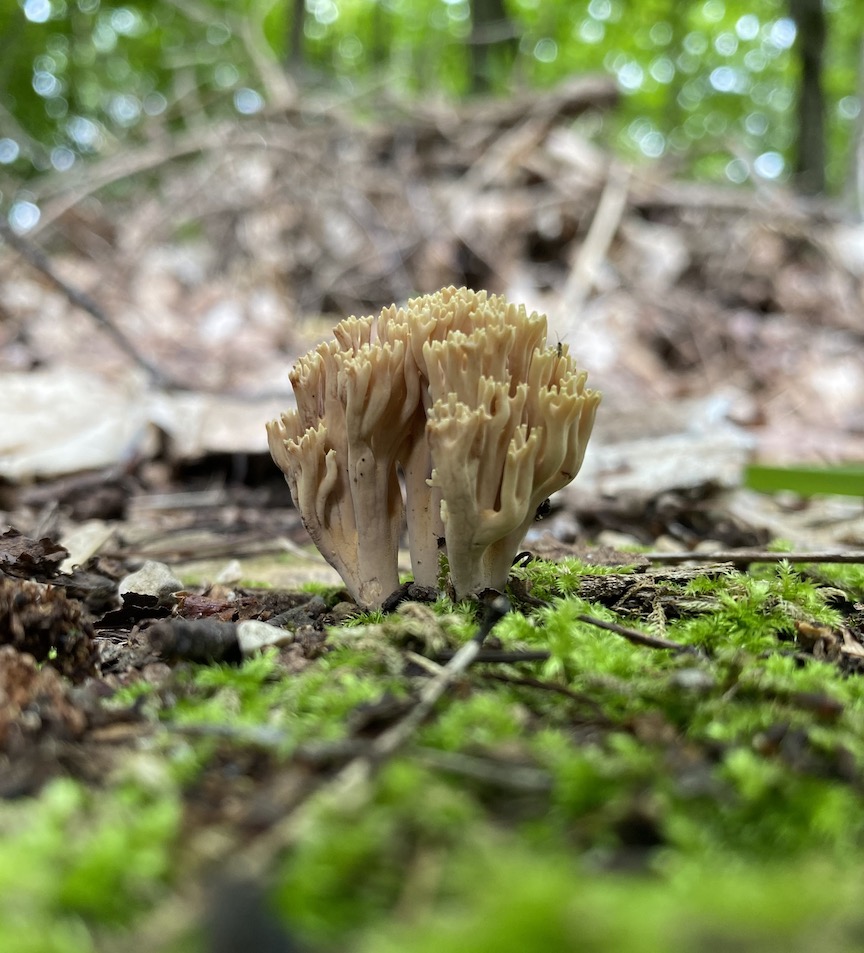
This is a coral mushroom (above), so named for obvious reasons. Isn’t it a beauty? Evidently, it grows almost everywhere in North America although I’d never seen it at our place before. But then I hadn’t actually been looking. Really looking. Once a couple of exotic mushrooms caught my eye, just steps outside our door, I started slowing down and paying attention. Then the discoveries started coming thick and fast.
Primly pin-striped

I’m pretty sure the handsome looker shown above is a Mica Cap (Coprinellus micaceus). The fine radial grooves that striped the cap are a distinctive marking. It’s a type of Gill fungi and is quite common throughout North America. It’s supposed to be edible but I’m not going there.
The secrets beneath
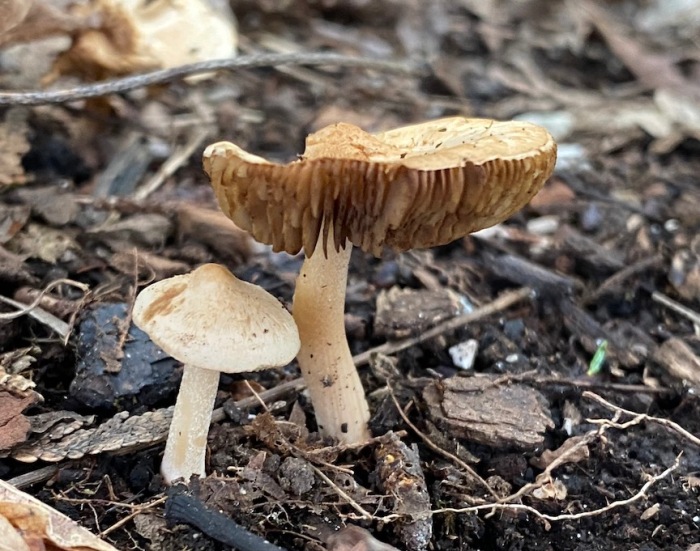
I’m thinking the wild-looking thing above is a Cortinarius caperatus, also known as The Gypsy, but don’t quote me. No one is quite sure how these fungi got the nickname Gypsy. I love the deeply gilled undersurface of the cap.
Here’s another mushroom that is supposed to appear just about everywhere in North America. This is the first time I’ve seen it and it popped up right next to our path down to the lake.
Gold drops
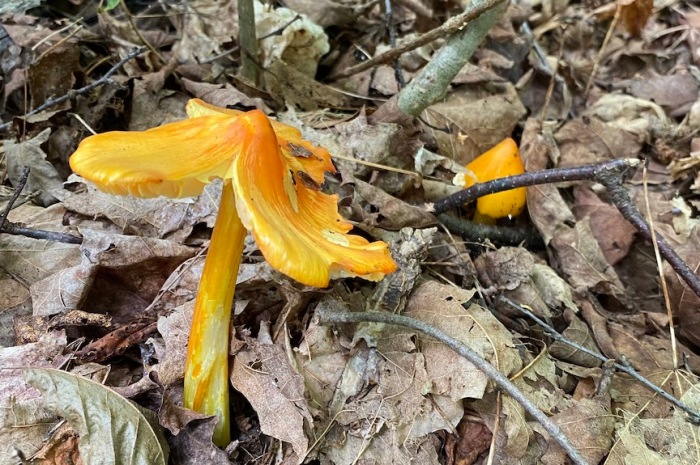
As far as I can figure, the pair of golden orange mushrooms shown above are from the Waxy Cap or Waxcap family.
SIDENOTE: I love it when a scientific brief about a particular plant species will state “Edibility: unknown.” (Most WaxCaps are grouped into a category described as “uncertain” in terms of safe eating.) When exactly does a plant become known for not killing you? I realize that someone, back in the day, had to have eaten the first tomato or the first banana. Maybe they saw an animal eat it and, seeing that the poor beast didn’t convulse or drop dead, decided to give it a go. But, man, that must have taken some pluck.
Beautiful mystery
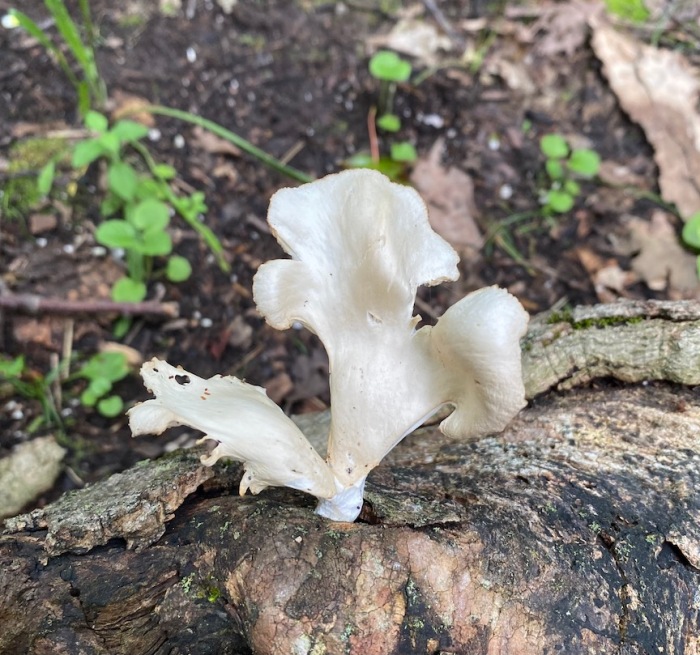
I’m guessing this is an Angel’s Wing, a mushroom similar to the Oyster mushroom but kind of poisonous. By that I mean this baby was considered edible and eaten with gusto, then it killed a bunch of people, and to this day, it’s a bit of a mystery. New theories suggest its toxicity depends on climate conditions and the mushroom’s growth. Read about this fascinating conundrum in Angel Wings: Identification and Controversy.
More mysteries
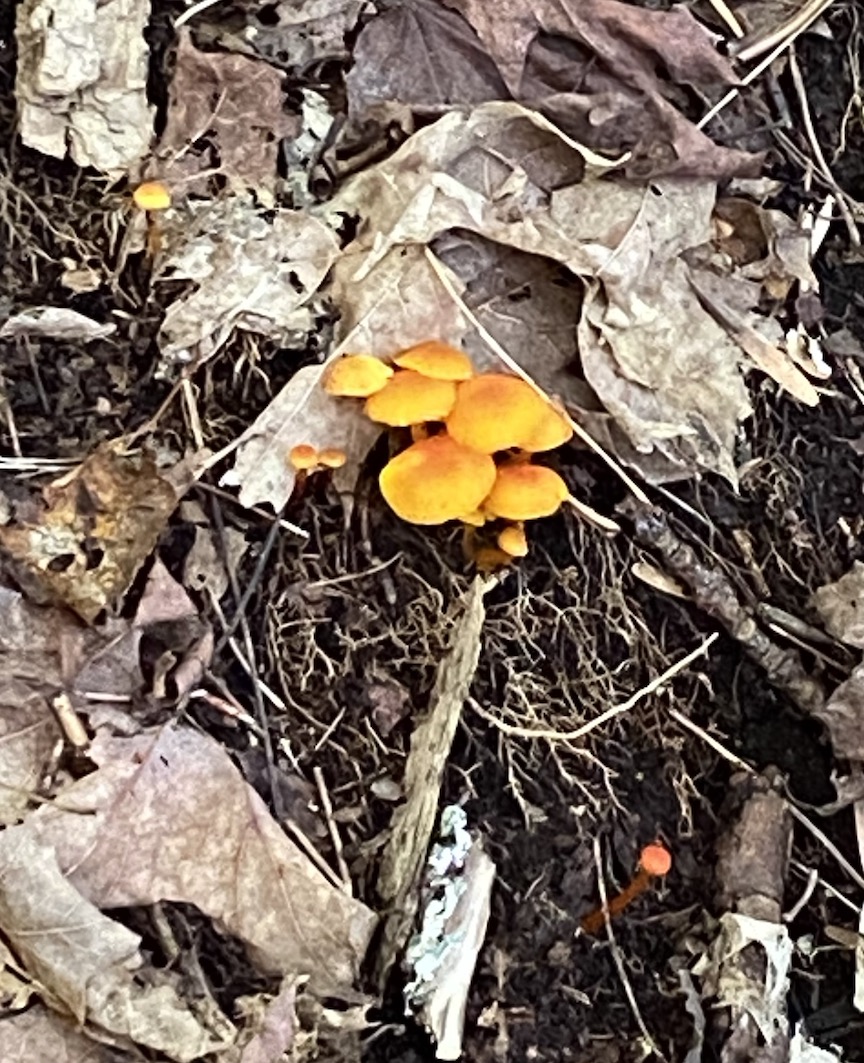
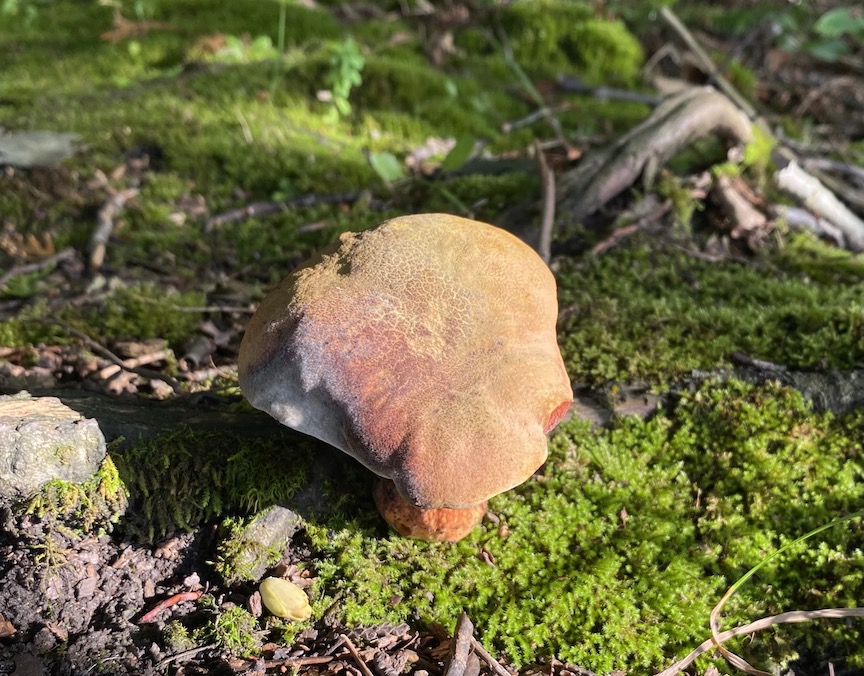
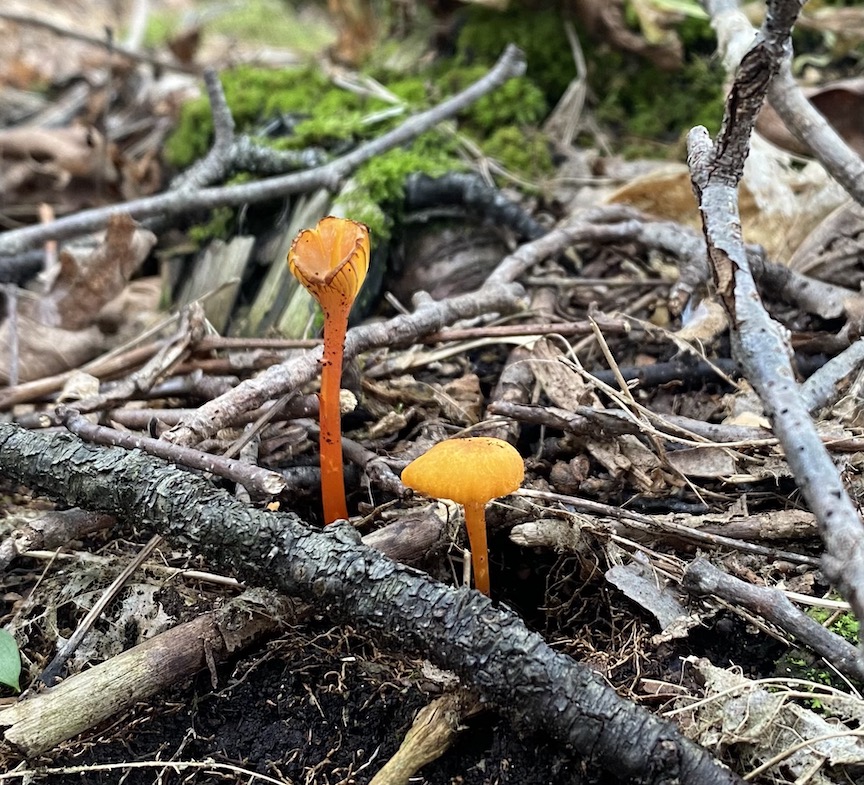
All three of these fungi are bright orange but each is completely unique in shape. At this time of year, the soft dark ground, littered with dead leaves, twigs and general natural decay, is bespangled with bright red and orange splotches. Maple leaves that have turned their bright fall colours make up some of this decoration but the mushrooms outshine the leaves for their intensity of colour and variety of shapes and textures.
And then there’s the slime
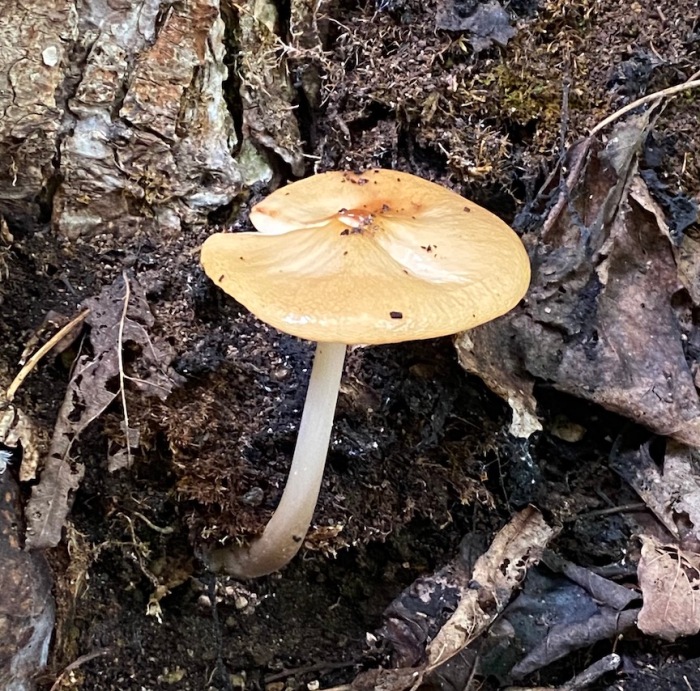
This delicate thing could pass for a meringue on a stick if it wasn’t for the shimmery, slimy coating on its cap. I kept my distance.
A polypore with a sense of humor
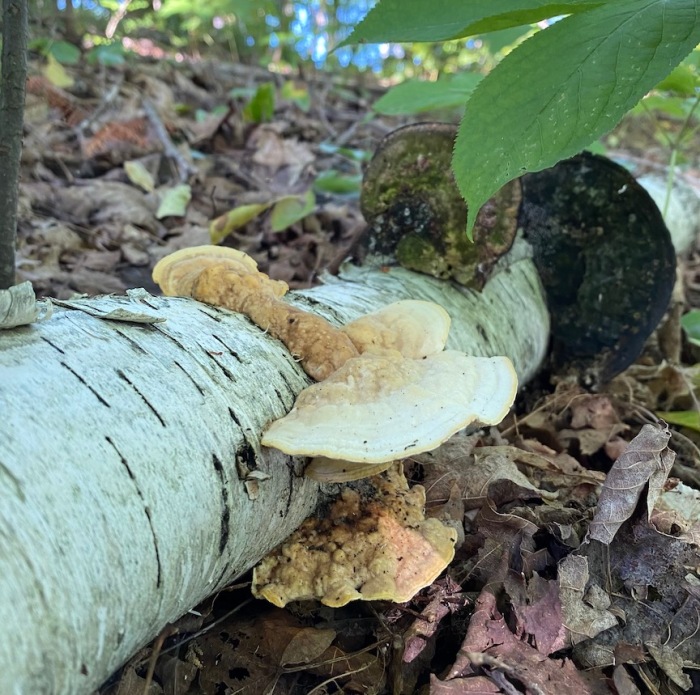
I’m pretty sure we’re looking at some polypore action here. These are a big group of mushrooms that decompose wood and make their spores with tubes. Hmmmm.
When I saw this fungus (or fungi, hard to tell) I had only one thought: Doesn’t it look like a slim beige thing wearing a large ruffled hat has flopped over a tree trunk to gaze adoringly at its reflection?
These kind of fungus can come in a surprising variety of colours and patterns. I love the feather-impersonating Turkey Tail polypore so much I featured a whole post about it as well as a rather beautiful slime mold named after the fruit it resembles. Both these wonderful things were also found near our cottage.
More polypore love
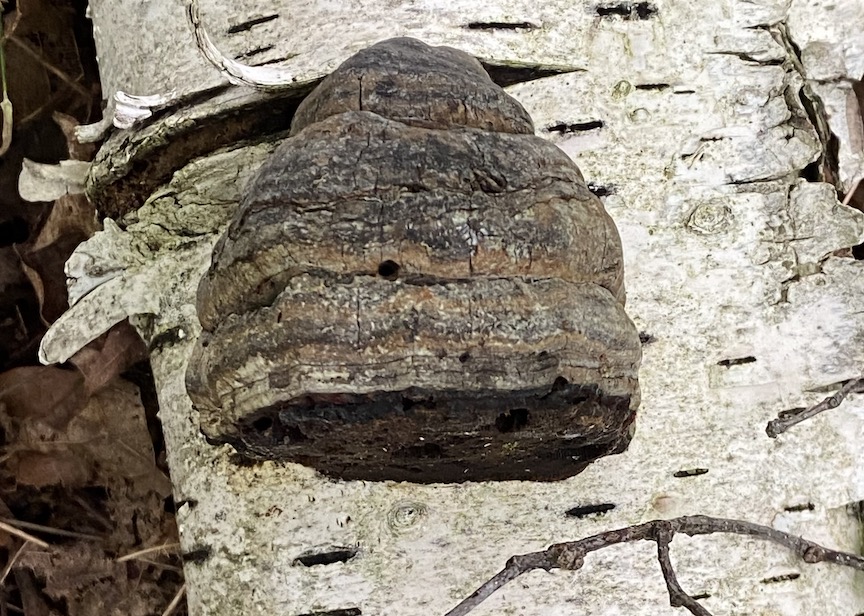

These two polypores, above, are quite possibly dead. The one on the left is probably a Hoof fungus, so named for resembling a horse’s hoof. We see a lot of these when they’re young and fresh and they tend to be quite pale with a lighter coloured underside, unlike the one here. So I figure it’s past its sell-by date. The one on the right looks suspiciously dead as well. Mind you, how can you really tell if one of these things isn’t just taking a rest. It’s not like fungus are known for acting out much. That’s for slime molds.
Creepiest yet
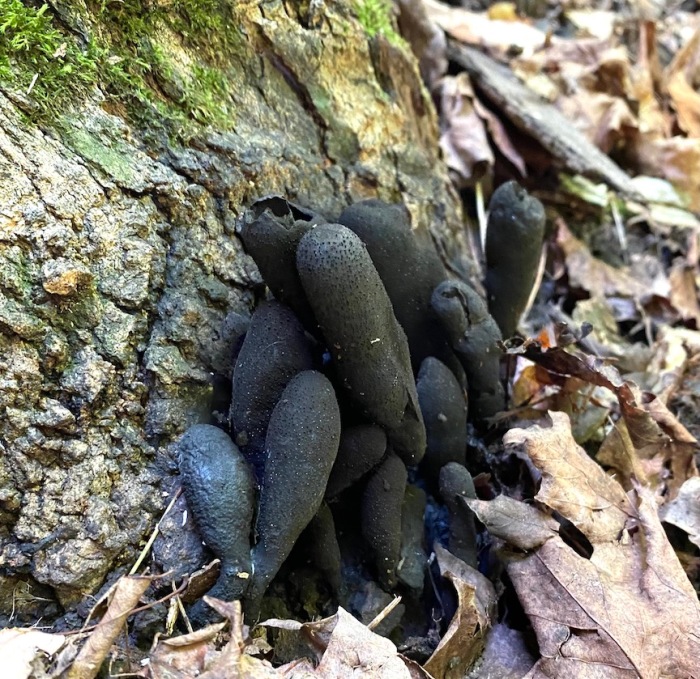
When my guy came into the cottage and said “Hey, Crys, you’ve got to come and see this,” I figured he’d found something pretty strange. Strange doesn’t even begin to describe Xylaria polymorpha, aptly referred to as Dead Man’s Fingers. These charcoal-coloured protuberances are usually found at the foot of tree stumps, which is exactly where this one was found. It’s a saprobic fungus, breaking down wood and, in the process, creating healthy soil and making nutrients available to other growing things like plants and insects. So, all good. Very nice and sociable. Still really creepy, though.




Pingback: A wonky, wonderful summer | Ministry of the fence
Plantlife are inviting people to contribute to their UK survey of wax caps this year. I am not sure I’ve ever seen any, but then I’m not very confident identifying most toadstools.
LikeLike
Enjoyed this one….
<
div>Now will be looking for mushrooms
LikeLiked by 1 person